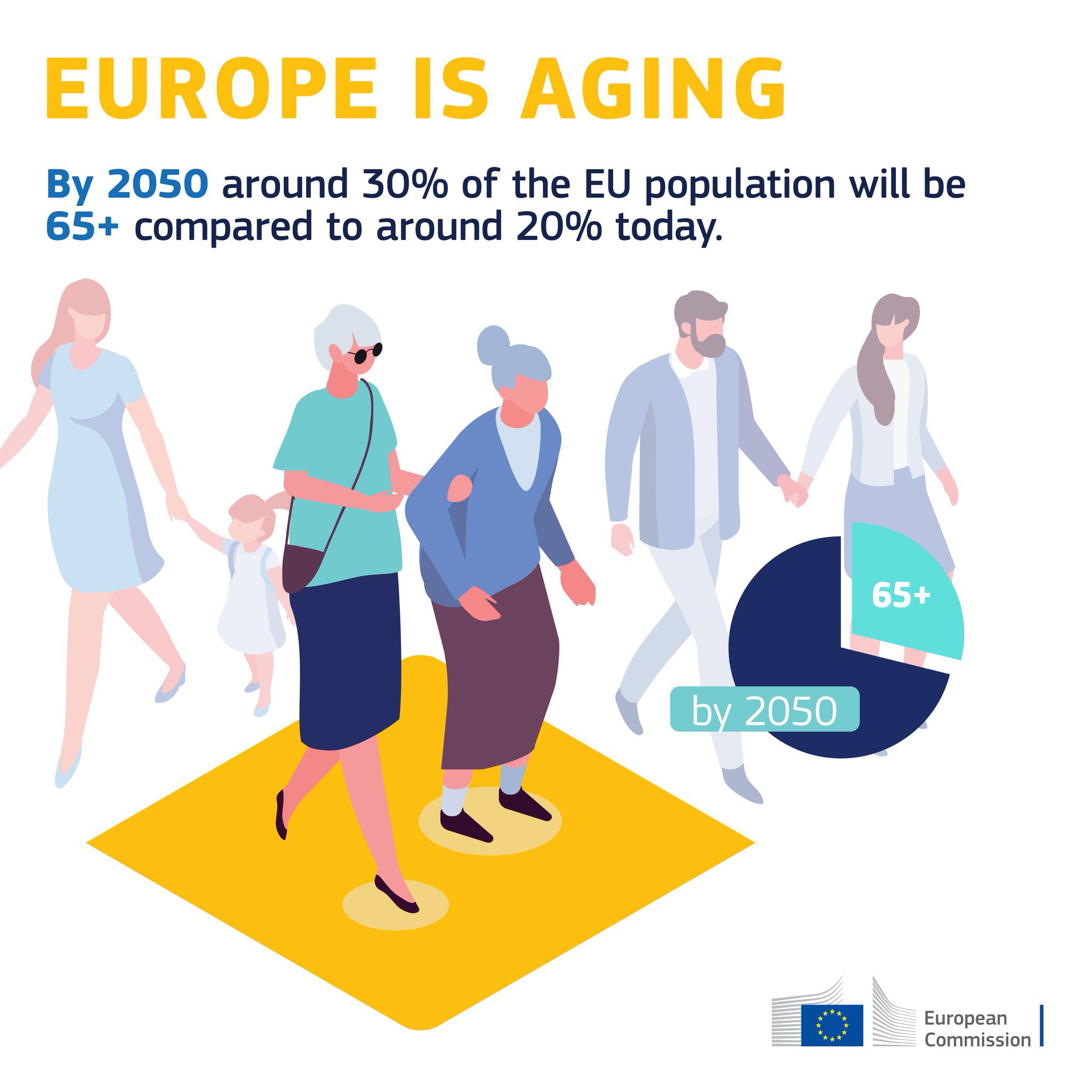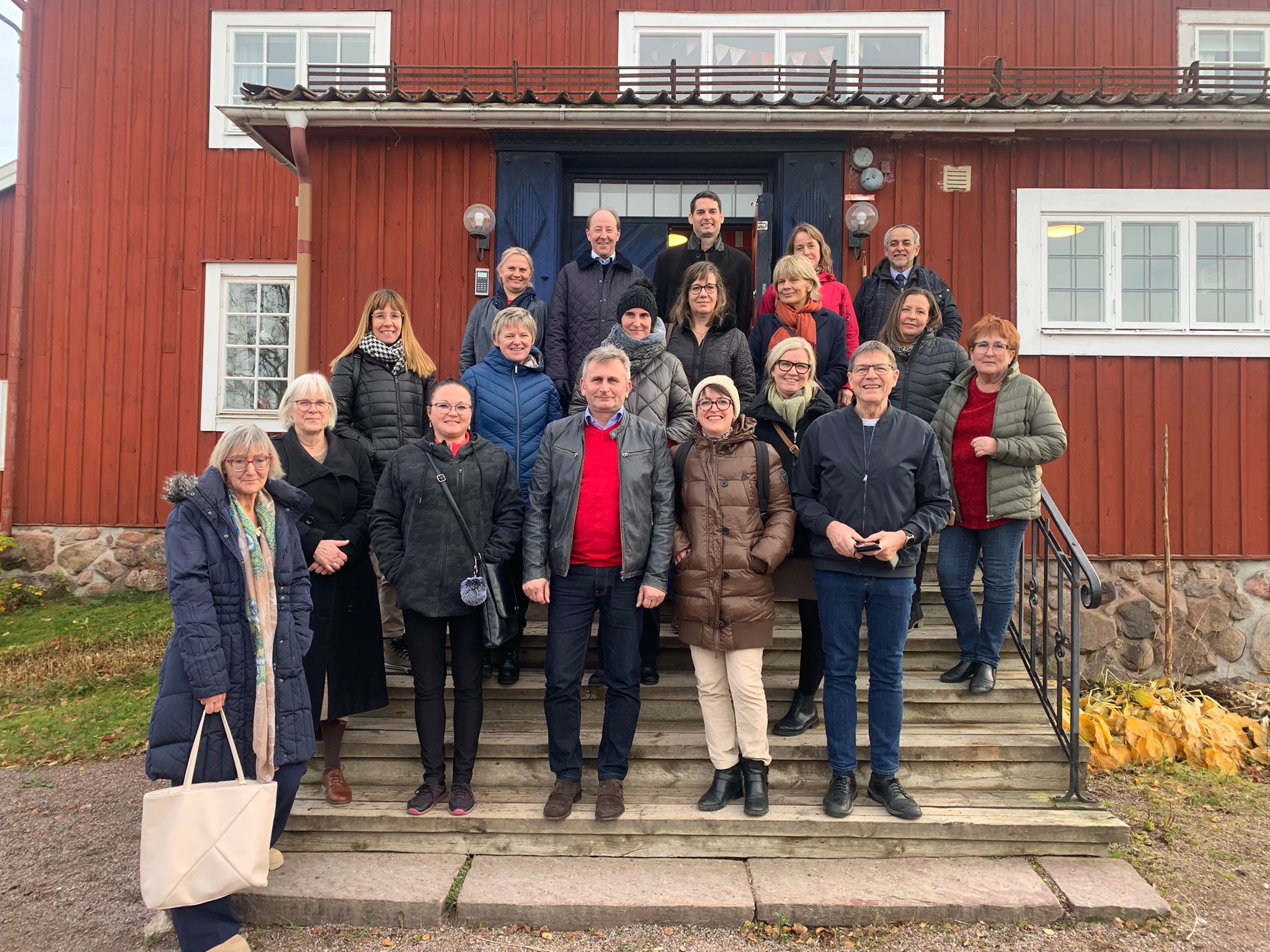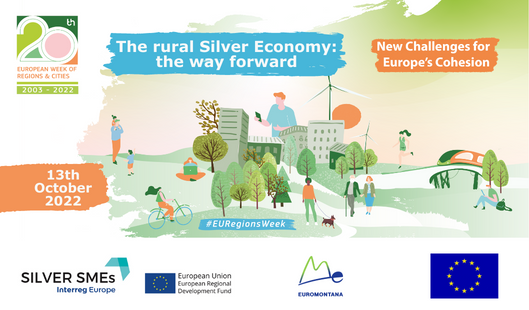How will the population in rural communities evolve until 2050? How will age groups be distributed in the coming decades? Will demographic trends be the same in all rural and mountainous regions? These were among the questions recently answered in the Joint Research Centre (JRC) study “The Demographic Landscape of EU Territories”.
A rural-urban demographic gap?
The share of older adults in Europe will overall be increasing in all areas. But is there a gap between rural and urban territories? The study reveals that the highest increase of the share of older adults will be experienced in rural areas, with an increase from 19% in 2011 to 30% in 2050, in contrast to an increase from 17% to 29% in towns, and from 15% to 27% in cities. If there is a clear demographic gap between rural and urban areas in most Member States, the study also foresees that by 2050 urban areas will progressively catch up with rural regions. Differences of course exist between EU countries: the increase of the share of older adults living in rural areas will for instance be particularly important in Spain and Portugal.
In terms of functional area, it is also to be noted that the share of older adults in Europe systematically increases with distance from town and city centres – which, in policy terms shall call for more adapted goods and services directly in rural villages.
What other geographic factors should be considered?
Yet, the JRC points that the rural-urban typology is not the only indicator to consider when analysing demographic forecasts. Other geographic and demographic factors are also to be taken into account, such as low population density and even depopulation as well as natural constraints. The study stresses that ageing can be both “the result and the driver of a process of depopulation” and that demographic decline can in particular affect remote areas.
The JRC’s study also focuses on the trends in mountain areas, where additional factors, such as altitude, lack of services like transport and remoteness, lead to a loss of attractiveness and thus to an ageing population. Based on the demographic forecasts, the study expects Greece, Cyprus, Sweden and Portugal to be in the future the countries with the highest proportions of elderly population in mountainous areas in the EU. The transformation for some regions will be especially challenging, like in Slovakia where the population above 65 in mountain areas is expected to almost double by 2050 or in Poland, Slovenia, Austria and Spain, where the ageing population will increase by more than 60% in mountain areas. Only a few mountainous regions are foreseen to see their senior population decrease, such as South-East France, Finland and in some parts of the Balkans.

The Joint Research Centre’s study analyses future demographic trends in Europe; it enables to go beyond the rural-urban divide by taking into account the various factors that affect the demography of regions, including how attractiveness, population density and natural constraints act on ageing. This study therefore helps assessing the specific needs of regions in supporting older generations and designing regional and local policies for the competitiveness of the Silver Economy sector. In particular, it suggests that special attention should be paid to rural areas that are remote, sparsely populated or mountainous.











